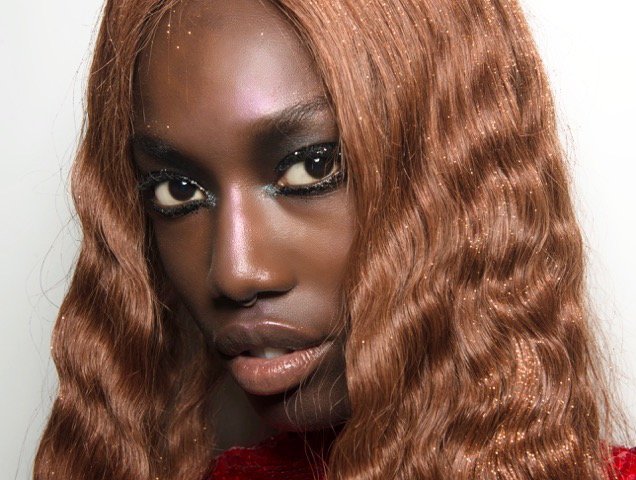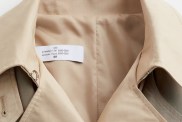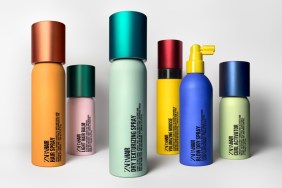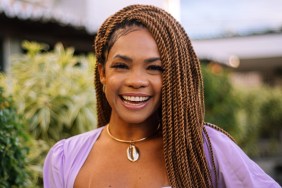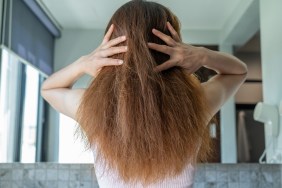The runways have decreed it: Super long hair is having a moment. For those of us who chopped our hair into bobs, lobs or went for the full shave, that’s a bit of a problem. If we want to participate in the long hair trend now — and not in a few years when our short haircuts have grown out — extensions are an option.
Hair extensions used to be the stuff of celebrities but Instagram’s obsession with ever-changing hair has helped make extensions more known to us non-famous folk. While most of us know that extensions are a way to get long hair without popping hair vitamins and waiting for our strands to grow, the extension attachment process, as well as the upkeep, aren’t as commonly known.
Extensions can be as high maintenance as natural strands, if not more so. Not to mention that those long, flowing locks can come with a hefty price tag. To spare you finding out the full details after the fact, we asked the experts to give us the full details. Before booking that salon appointment find out all there is to know about getting hair extensions.
The Basics
Sorry, but anyone with a buzz cut is going to have to wait until their hair grows out a bit before getting extensions. Chelsea Malmquist, extensions expert and senior stylist at SEVEN salon, explains that hair must be a minimum of 4 inches before getting extensions. Taliah Waajid adds that hair must be long enough to braid or make a cornrow base for extensions to be applied.
Waajid also considers the health of hair to be one of the most important factors. If hair isn’t healthy, it must be treated before any extensions are applied to it. For those craving longer lengths, she suggests wearing a wig in the meantime while hair is getting treated for extensions.
As with most things, understanding the process and choosing a reputable extensions expert are essential. Malmquist explains, “Stylists aren’t just born knowing how to work with extensions. Experience is key.” Have a regular hairstylist you have a great relationship with? If they don’t do extensions, ask for a recommendation.
Getting a consultation can help you finalize your decision and clear up any further questions. Malmquist warns that hair extensions aren’t cheap and once using them, it can be hard to go back to natural hair.
The Cost
The prices of hair extensions can vary greatly. Malmquist says that it depends on the quality of hair, the method extensions are applied and the experience level of the stylist. She says hair extensions start at a few hundred and cost as much as a few thousand. Waajid seconds this, adding that they’re between $75 and $300 on average and can go as high as $2,000. Just a bit more than a haircut, eh?
Types of Hair Extensions
There are natural and synthetic hair extensions and it’s important to consider the differences between them. Waajid states that natural hair extensions are usually made from human hair. Most natural extensions are processed to permanently take the shape of the desired hair texture, e.g., straight, wavy, curly, kinky, etc. Of course, the more expensive the extensions, the better they have been processed. She warns that some less expensive hair extensions can be mixed with synthetic fibers or even animal hair.
In contrast, synthetic hair is made from plastic fibers. It’s also processed for the desired texture. Waajid explains it’s mostly used in pre-prepped styles like crochet, faux loc hair and pre-curled styles. Malmquist adds that it has an unnatural feel and you can differentiate human and synthetic hair based on price, maintenance, texture and longevity.
One big issue is that synthetic hair will melt when heat styled (e.g., flatironed). Waajid says that Kanekalon is a high-end synthetic fiber that she has found to be the best fiber for braiding hair, especially for those wanting to heat style. Kanekalon extensions will straighten and take the shape of rollers without melting.
Hair Extension Applications
There aren’t just different hair extensions, there are also differences in how they’re applied. Common hair extension applications include micro-link hair extensions, weave hair extensions, tape hair extensions and pre-bonded/fusion extensions.
Micro-link hair extensions: These are also known as micro-bead or loop hair extensions. Malmquist says they’re applied by looping (get it?) the extensions through natural hair and clamping it down with a pair of pliers and a metal bead.
Weave hair extensions: “Weave” is a common term used to mean hair extensions, but there are specific weave extensions. They are applied by braiding the natural hair into a cornrow and using a needle and cotton thread to attach the extra lengths.
Tape-in hair extensions: These are classified as semi-permanent extensions. They’re pre-taped and sandwiched on either side of natural hair.
Pre-bonded extensions: These are also referred to as fusion hair extensions. They are attached to natural hair using different adhesives, such as keratin and glue.
Clip-in extensions: Waajid reveals that these can be the least damaging to hair if applied correctly because they are not attached to a braid. They are clipped to hair and quick to install.
Net weaving extensions: Net weaving is another weaving technique where a net is sewn on the base of the cornrows, then the weave weft extensions are sewn to the net. This prevents additional stress on the hair.
Crochet extensions: Crochet extensions are done using the same technique used to apply weft weaving, but the extensions are not sewn on to the braids. They are applied using a latch hook needle.
In terms of the best method for attaching hair extensions, Malmquist says, “There is not one type of bond that is better than the other. The type of hair and method is going to determine what would [be] best for each client.” She adds that fine hair generally does best with tape-in extensions, whereas the other options are better for coarse locks.
How to Prevent Damage
According to Malmquist, “Hair extensions, or any foreign object attached to hair, can cause a certain degree of damage, however, the damage can be minimized with proper maintenance.” Having a trained stylist who is familiar with the different types of extensions and what is best for different hair types is key. Once the extensions are in, watch out for hair loss, red and/or irritated scalp, bald patches or matted extensions. Also, pay attention to headaches. Extensions that are attached too tightly or are too heavy can cause head pain.
In terms of styling, Waajid cautions against getting a style that will be too heavy for the area where the extensions are being added. This is especially important for finer hair. She states that interlocking, crochet styles work best for thin hair because they stay pretty close to the scalp and are “kind of one unit.”
And be gentle. Avoid tugging or aggressively brushing hair.
Maintaining Hair Extensions
Like unicorn dye jobs, hair extensions require some TLC to keep them and natural hair looking their best. It will depend on the style and kind of hair used for extensions, but Waajid stipulates that everyone should have a hair care regimen for the natural hair and scalp under the extensions.
Typically, Malmquist advises waiting 48 hours after hair extensions have been put in before washing. After that, maintenance is in order. The scalp can easily be forgotten about but it’s key to look after it as dirt and perspiration build up, which can make extensions tangle. Malmquist reveals that once the hair tangles, it’s likely that the extensions will fall out.
To prevent that from happening, use a good quality shampoo and conditioner specifically formulated for use on natural and synthetic hair. The hairstylist should offer product suggestions. Malmquist’s current favorite is the SEVEN Haircare KENTE BOND System ($88).
Before washing, hair should be detangled with a detangling brush, starting from the ends and working up to the roots. Strands should then be washed in a downward motion from the roots to the ends. Malmquist warns, “It’s important to remember that rubbing can cause the hair to tangle, [which can lead to extensions slipping out] so make sure to rinse hair thoroughly.”
Conditioning is also very important because hair extensions don’t receive the natural oils from the scalp. Just be very careful because conditioner should never be applied near the root area and the attachments. This will cause the attachments to slip and the extensions to fall out.
Hair should also be gently dried and detangled. No matter how tempting, avoid going to bed with wet hair. Malmquist suggests putting hair into pigtails or a braid overnight.
Hairstylists should also instruct clients when to return for adjustments. Malmquist reveals that follow-up appointments normally happen every three to six weeks.
How to Remove Hair Extensions
There may come a time when you grow tired of your glossy extensions. In that case, it’s important to remove them properly. Malmquist cautions against attempting to remove them at home. “The hair extension removal process is not recommended to be performed by the client — you could end up doing way more harm than good!” she says. Go to your stylist to get them removed properly to save hair from extra damage.
